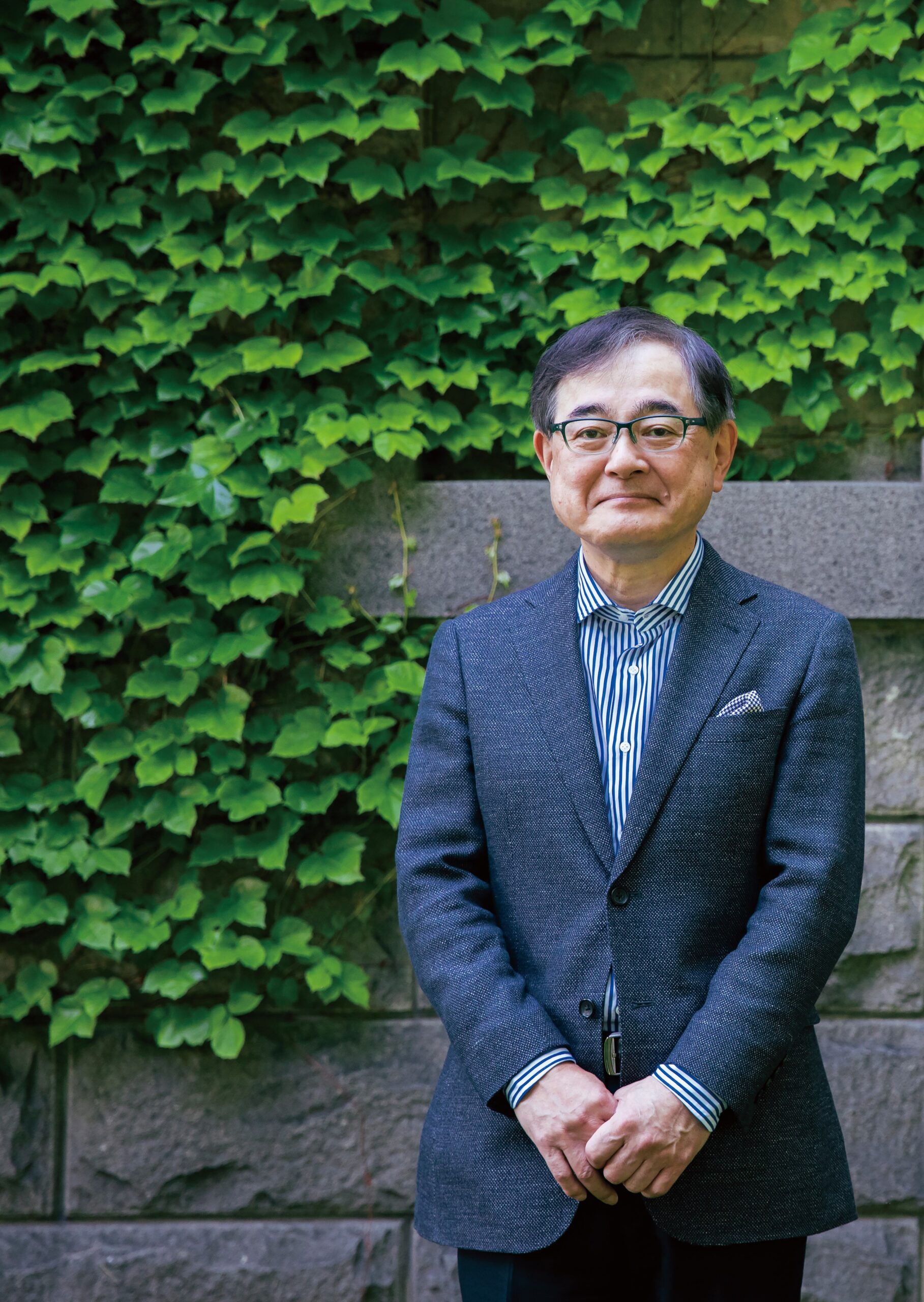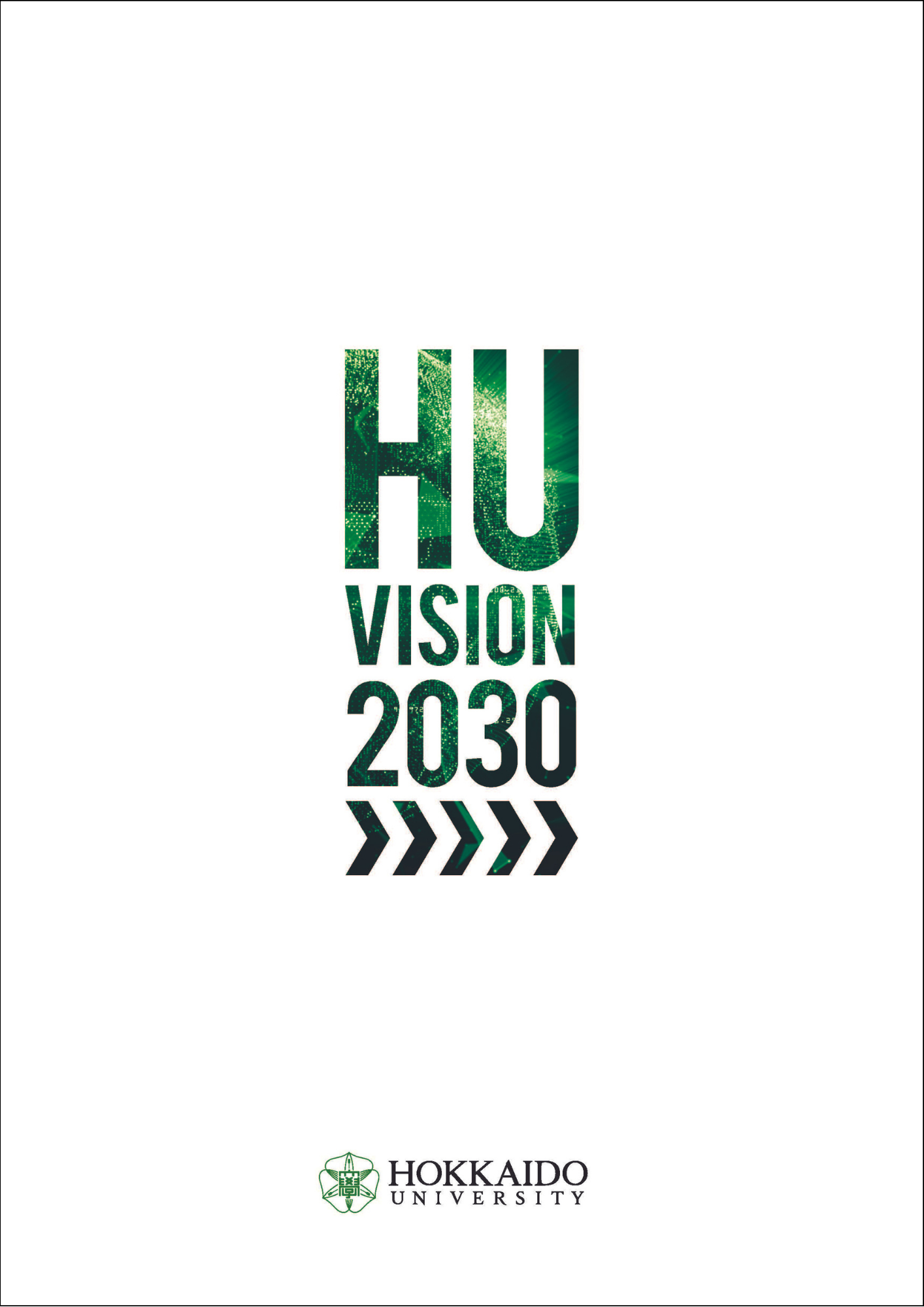HU VISION 2030
1. About HU VISION 2030
A number of successful cases in the U.S. and Europe have demonstrated that university-initiated innovation is a driving force for social change. Even at this very moment, university-initiated innovations are taking the world by storm. In contrast, Japanese universities, despite our excellence in research, have lacked a mechanism to implement the research results in society. Or rather, there may have been lack of structural reform in universities necessary to generate innovation. This is one of the biggest reasons for the so-called “lost 30 years.”
I believe that innovation in universities consists of two elements: “Excellence” of education and research in the fields of science and technology, and “Extension,” the ability to expand education and research into society and solve regional issues. While the Excellence of Japanese universities used to be comparable to our counterparts overseas in the past, our mechanism of Extension was weak. As a result, Japan has lagged in fostering a virtuous cycle and ecosystem in which the two driving engines of Excellence and Extension generate the fruits, outstanding people and profits, then that in turn create the next Excellence and Extension.
This is one of the reasons why Japanese comprehensive universities, including Hokkaido University, have fallen behind the universities in the world. Science, technology, and innovation are now identified as important growth engines in Japan’s growth strategy. Society is calling for the creation of innovation through collaboration between universities and society, in other words, the integration of Excellence and Extension.
The Future Strategy for the 150th Anniversary of Hokkaido University, established by Hokkaido University in 2014, has presented a vision for the university by setting the year 2026 as the target year. Based on our own analysis of university-initiated innovation as mentioned above and in response to the expectations of society, HU VISION 2030 sets the next target year for 2030, four years after of the Future Strategy for the 150th Anniversary of Hokkaido University. HU VISION 2030 definitively articulates Excellence and Extension and presents the university’s medium-term vision for the creation of a virtuous cycle and ecosystem through the integration of Excellence and Extension.
2.“Excellence and Extension” aspirations of Hokkaido University
1) The identity of Hokkaido University
When considering a vision, it is essential to understand our identity. One cannot conceive of a clear vision without understanding the starting point and in order to do that, revisiting the historical background and geographical characteristics is necessary.
The origins of Hokkaido University go back to Sapporo Agricultural College, which was founded in 1876. The College was established due to the strong resolve of the government of the time to develop agricultural technology in cold regions and to foster motivated young students, and this background is particularly distinctive among Japanese universities. Building on these characteristics, the university has developed as the only comprehensive university in the vast land of Hokkaido and has formed an unmatched individuality.
As a result, the University has developed unique strengths in the following areas: (1) field research exemplified by one of the world’s largest research forests and extensive marine research, (2) numerous examples of worldwide leading-edge and innovative research, (3) the identification of problems and development of solutions for the resolution of regional issues, (4) a long-held history of sustainability since the university’s inception that ties into SDGs.
At Hokkaido University, we view this identity in terms of two axes of coordinates, Excellence and Extension, and aim to create a virtuous cycle and ecosystem in order for the unparalleled identity nurtured over the 150 years of our history to make a giant leap forward into the next 150 years.
2) Novel Japan University Model
While there is some overlap between Excellence and Extension, we rather consider them orthogonal coordinate axes. Excellence in research, for example, is discipline-driven (in academic fields) and is measured by globally established research measurement indices, such as the ratio of the Top 10% research papers. On the other hand, Extension in research is issue-driven, and the results of such research are not necessarily measured by global research measurement indicators. Rather, the results are measured by their social impacts, such as their contribution to solving social issues and achieving SDGs, or increasing the number of startups.
HU VISION 2030 provides a guideline for pioneering efforts to create a virtuous cycle and ecosystem of Excellence and Extension. By realizing HU VISION 2030, Hokkaido University aims to become a “Novel Japan University Model,” a new model of Japanese university that generates significant social impact by solving global issues.
The Novel Japan University Model refers to a flagship university in Japan as a management entity, a new public asset that significantly strengthens partnerships with the international and local communities and creates social impact and innovation through collaboration, at a level far beyond the efforts of Japanese national universities in the past. The Novel Japan University Model under HU Vision 2030 strives for well-being in society that can only be achieved when universities actively expand and promote education, research, and social co-creation for the pursuit of sustainability in the following three fields: (1) the earth, (2) society, and (3) people.
HU VISION 2030 defines the basic principles in the following eight areas with increased clarity and details, under which Hokkaido University’s pioneering initiatives toward the year 2030 shall be created: (1) Education, (2) Research, (3) Co-Creation with Society, (4) International Collaboration, (5) Diversity, Equity, and Inclusion, (6) Governance, (7) Financial Base, and (8) Pursuit of Sustainability.
Through HU VISION 2030, Hokkaido University aspires to establish the Novel Japan University Model and move vigorously toward the year 2030 for the realization of “sustainable well-being in society,” the world’s common goal.
HOUKIN Kiyohiro
President


